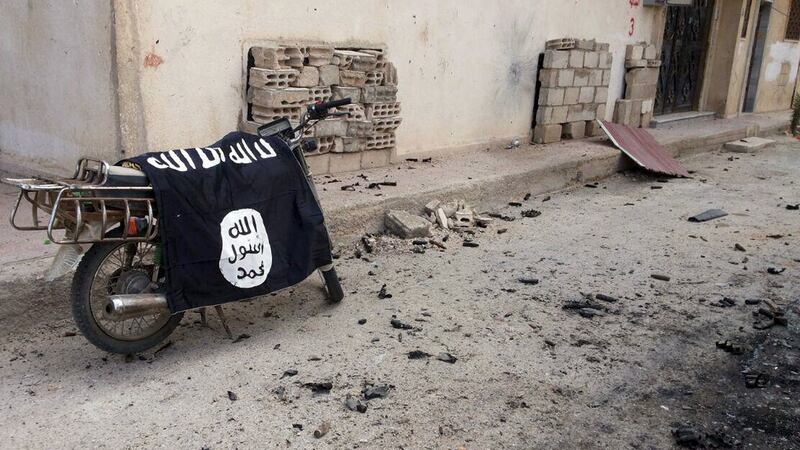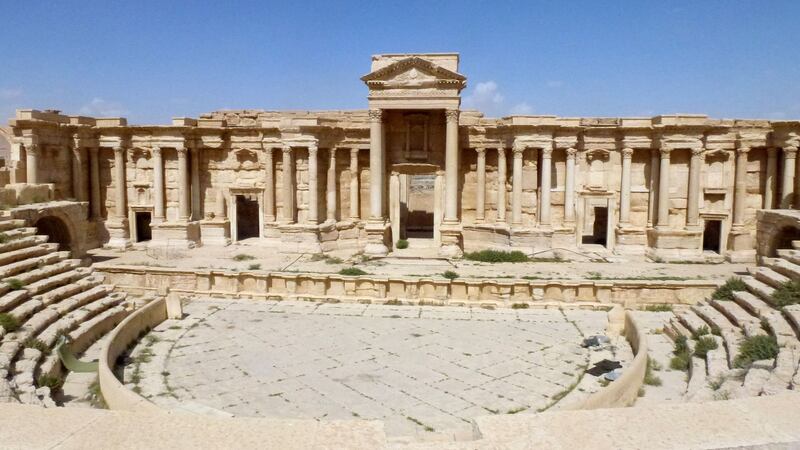Syrian government forces backed by heavy Russian air support drove Islamic State out of Palmyra on Sunday, inflicting what the army called a “mortal blow” to militants who seized the city last year and dynamited its ancient temples.
The loss of Palmyra represents one of the biggest setbacks for the ultra-hardline Islamist group since it declared a caliphate in 2014 across large parts of Syria and Iraq.
The army general command said that its forces took over the city with support from Russian and Syrian air strikes, opening up the huge expanse of desert leading east to the Islamic State strongholds of Raqqa and Deir al-Zor.


Palmyra would become “a launchpad to expand military operations” against the group in those two provinces, it said, promising to “tighten the noose on the terrorist group and cut supply routes ... ahead of their complete recapture”.
The Syrian Observatory for Human Rights said there were still clashes on the eastern edge of Palmyra on Sunday morning, around the prison and inside the airport, but the bulk of the Islamic State force had withdrawn and retreated east, leaving the city under president Bashar al-Assad’s control.
Amaq, a news agency close to Islamic State, said its fighters launched a twin suicide attack against government forces in west Palmyra, without giving details.
Syrian state-run television broadcast from inside the city on Sunday morning, showing largely deserted streets and several badly damaged buildings.
It quoted a military source saying Syrian and Russian jets were targeting Islamic State fighters as they fled, hitting dozens of vehicles on the roads leading east from the city.
Russia’s intervention in September turned the tide of Syria’s five-year conflict in Mr Assad’s favour. Despite its declared withdrawal of most military forces two weeks ago, Russian jets and helicopters carried out dozens of strikes daily over Palmyra as the army pushed into the city.
“This achievement represents a mortal blow to the terrorist organisation and lays the foundation for a great collapse in the morale of its mercenaries and the beginning of its defeat,” the army command statement said.
In a pointed message to the United States, which has led a separate Western and Arab coalition against Islamic State in Syria and Iraq since 2014, the military command said its gains showed that the army "and its friends" were the only force able to uproot terrorism.
‘Biggest single defeat’
Observatory director Rami Abdulrahman said 400 Islamic State fighters died in the battle for Palmyra, which he described as the biggest single defeat for the group since it announced its cross-border caliphate nearly two years ago.
The loss of Palmyra comes three months after Islamic State fighters were driven out of the city of Ramadi in neighbouring Iraq, the first major victory for Iraq’s army since it collapsed in the face of an assault by the militants in June 2014.
Islamic State has lost ground elsewhere, including the Iraqi city of Tikrit last year and the Syrian town of al-Shadadi in February. The United States said the fall of Shadadi was part of efforts to cut Islamic State's links between its two main power centres of Mosul in Iraq and Raqqa in Syria.
The Observatory said around 180 government soldiers and allied fighters were killed in the campaign to retake Palmyra, which is home to some of the most extensive ruins of the Roman empire.
Islamic State militants dynamited several monuments last year, and Syrian television broadcast footage from inside Palmyra museum on Sunday showing toppled and damaged statues, as well as several smashed display cases.
Syria’s antiquities chief said other ancient landmarks were still standing and pledged to restore the damaged monuments.
"Palmyra has been liberated. This is the end of the destruction in Palmyra," Mamoun Abdelkarim told Reuters on Sunday. "How many times did we cry for Palmyra? How many times did we feel despair? But we did not lose hope."
Reuters











